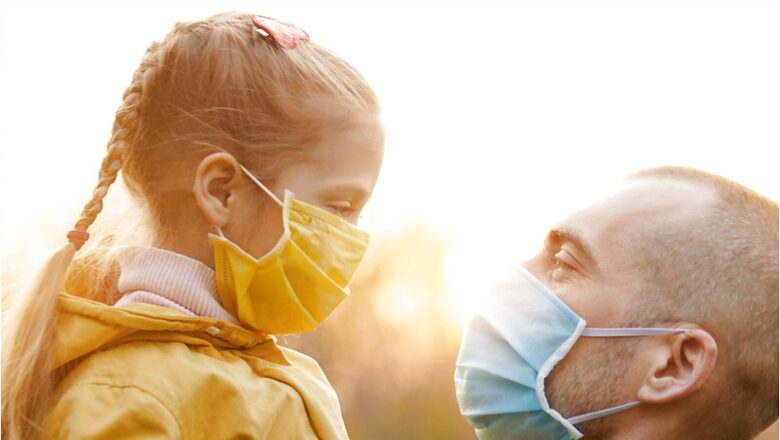
views
COVID-19 is an infectious disease caused by the recently discovered coronavirus. The COVID-19 virus spreads primarily through droplets of saliva or discharge from the nose when an infected person coughs or sneezes. The virus enters the body via nose, mouth and eyes. Some recent studies suggest that virus may be airborne and can be spread through fine infected droplets that remain suspended in the air in closed air-conditioned environments of offices, AC cabs-buses, shopping malls and theatres due to absence of cross-ventilation, even when you are not in direct contact with an infected person. It is essential that, after recovery, a person manages his/her lifestyle in a way that he/she can regain full fitness soon.
Winning smaller battles
If you are recovering from COVID 19 or returned home from the hospital, you will face smaller battles every day until you get back to your routine life. During and after COVID-19 treatment, you may experience some symptoms such as:
- Low energy levels and early fatigue.
- Difficulty in breathing, and becoming breathless with even a little bit of physical activity.
- Chest Congestion and excessive phlegm.
- Cough with phlegm.
- Loss of appetite and altered taste in mouth.
- Headaches.
- Lack of concentration.
- Anxiety and Fear.
- Insomnia.
Some of the symptoms will get better on their own, as time passes. Other symptoms will require patience and efforts from your side. However, the actual recovery may take a much longer time.
People with serious complications need ICU care and ventilator support for breathing, which can take a toll on their physical as well as mental health in the longer run. In many cases, the person may need assistance to breathe even after coming off a ventilator. The patient may need a mask or a Continuous Positive Airway Pressure (CPAP) ventilator at home, which would provide the required oxygen support.
Managing your Cough
Tips to manage a dry cough:
A dry cough is likely to put greater strain on your throat. The following strategies can be used to manage a dry cough:
- Stay hydrated by drinking plenty of water (lukewarm preferably)
- Take small sips of fluids instead of taking large sips to facilitate swallowing.
- Steam inhalation is necessary to cure a dry cough. So pour hot water into a bowl and put your head over the bowl and breathe in the steam. If comfortable, cover your head and bowl with a towel. You can also use a steam inhalation machine if you have one.
- Drink warm honey and lemon or another warm drink like kadha to soothe irritated throat.
- Salt water gargle or Betadine gargle (1 part betadine & 3 part of water) can be effective for treating a sore throat.
- If you feel the need to cough but don’t have a soothing drink or water at hand, swallow repeatedly.
Tips to manage a productive cough:
A phlegmatic or productive cough can become difficult to manage since you have to spit out the phlegm-filled sputum regularly. It’s also important to note that viral infections, especially COVID-19, are contagious, so proper disposal of sputum is very important. You should also ensure that the sink where you dispose of your sputum is regularly disinfected.
The following strategies can be used to manage a productive cough:
- Keep yourself hydrated with lukewarm water, broths, soups, herbal teas and kadha.
- Take steam inhalation at least thrice a day to loosen the phlegm congested in your lungs.
- Lie on either the left or the right side, instead of lying on your back. This might help drain the phlegm faster.
- Movement makes the lungs function, and it can also move the phlegm to facilitate your spitting it out. So, try to be mobile by walking around your room.
Fatigue Management
Chronic fatigue is classified as fatigue lasting more than six weeks. The impact of fatigue is more than just lower productivity. You can manage your fatigue through following:
- Planning for demanding (physically, mentally) and repetitive tasks.
- Regular staggered breaks during a day allow for both physical and mental restoration as well as social distancing.
- Days off during the week.
- Plan your day schedule to allow you a better plan for completing your work as well as sleep between work periods 14.
Quit Smoking – it will help
Smoking negatively impacts lung health, inhibits the body’s responsiveness to infections, and suppresses immunity. Compared to non-smokers, smokers are 2.4 times more likely to be admitted to an intensive care unit, need mechanical ventilation or die, according to a study.
The Good News
While it is difficult to undo all the damage from years of smoking, positive results from quitting tobacco are immediate, starting the second the lungs are no longer exposed to toxic chemicals.
Within 20 minutes of stopping smoking, heart rate and blood pressure drop; after 12 hours, the blood’s carbon monoxide level drops; after two weeks, circulation improves and lung function increases; and after one month, cilia, which move mucus out of the lungs, begin to regain normal functioning.
References:
• Ministry of Health & Family Welfare Guidelines
• WHO guidebook for Support for Rehabilitation Self-Management after COVID19- Related Illness
• US- Centre for disease Control (CDC)
Read all the Latest News, Breaking News and Special: Live-updating IPL 2022 auction tally | IPL Mega Auction Live Updates here.


















Comments
0 comment